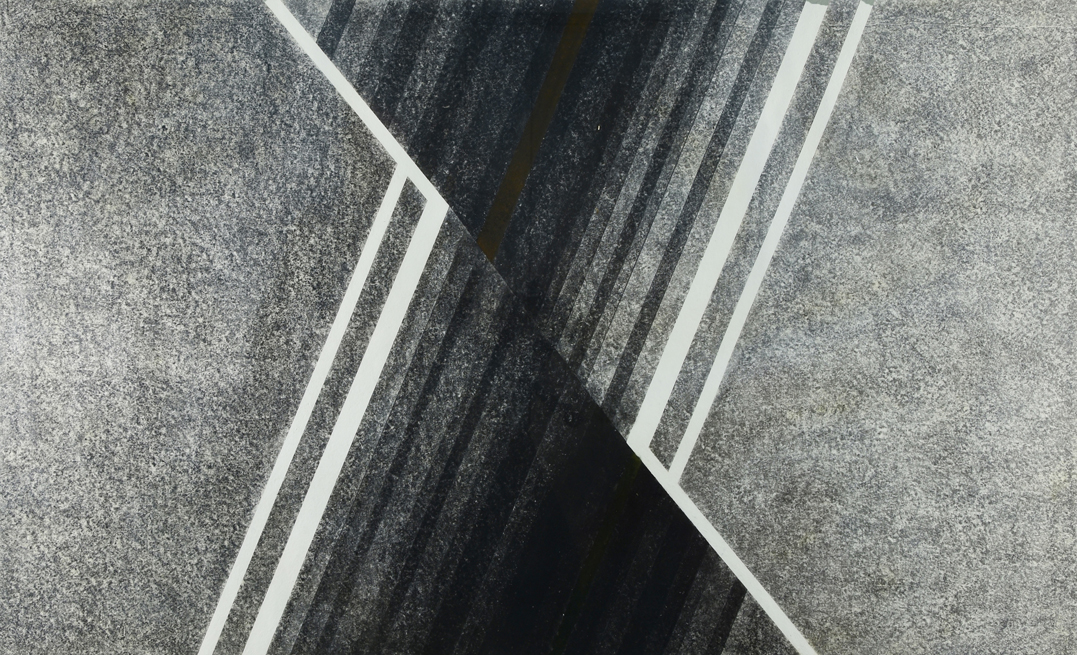Jaume Rocamora was born in Tortosa in 1946. In 1965, he had his first solo exhibition at the Cercle Artístic de Tortosa, and in 1978, at the Ateneu de Barcelona, he presented the exhibition Cardboard and Rocamora, where he proposed his basic grammar of geometric painting for the first time, one that he hasn’t given up even to this day.
His technique is primarily based on the use of cardboard, which he crafts by trimming it, gluing it and forming structures with different reliefs, with a predominance of slanted lines and planes, within constructivist parameters. In this regard, his first series are outstanding (Raw Materials, 1978; Compositional Systems, 1987; Conclusive Fitting, 1993).
He has exhibited his work on numerous occasions in other cities around Spain and abroad. As of the second half of the 1990’s, he introduced new formal and conceptual components: color and classical Greek tradition (Thalassa, 1998; Rietveld, 2005).
He is the author of several graphic art notebooks and artist books. In recent years, he has created several installations, where he has collaborated with the musician Josep Bagès, such as Labyrinth (2005) or Elements of Conduct and Transport (2009), reflecting on the plastic limits of the line and transporting the geometry of his collages to three-dimensional space. In 2012, to celebrate the fiftieth anniversary of his first participation in a group exhibition, he showed a retrospective of his work at the Museum of Modern Art in Collioure.
Diàleg de medis – Environmental Dialogue
1990
Charcoal drawing on handmade paper
87 x 121 cm
DIÀLEG DE MEDIS – ENVIRONMENTAL DIALOGUE 1990
drawing
Jaume Rocamora, its creator, explains this piece with the following words:
“The artist made this drawing using traditional and vocational techniques where, today, learning is a virtue of what’s possible in the world of creative contribution.
On a sheet of handmade paper, the stroke opts for parallel lines that, with the oblique ones that they provide, impose and form a visual fabric.
The charcoal and blending stump, or soft cellulose stick, make the grays gain tones in two directions, from shade to dark black.
White defines the space and makes it possible to organize the whole, while the warmth of the materials awakens a tactile desire in the user’s senses, who not only observes but also becomes integrated into the work”.
